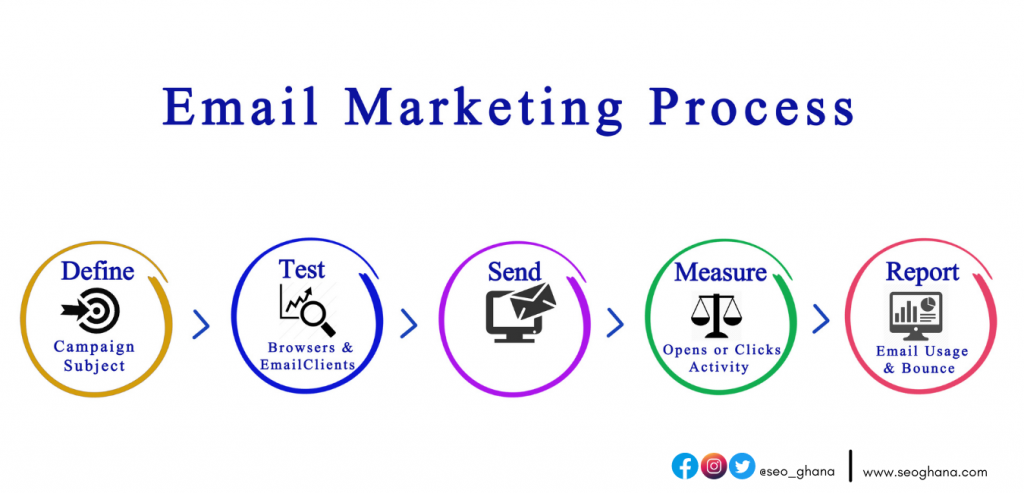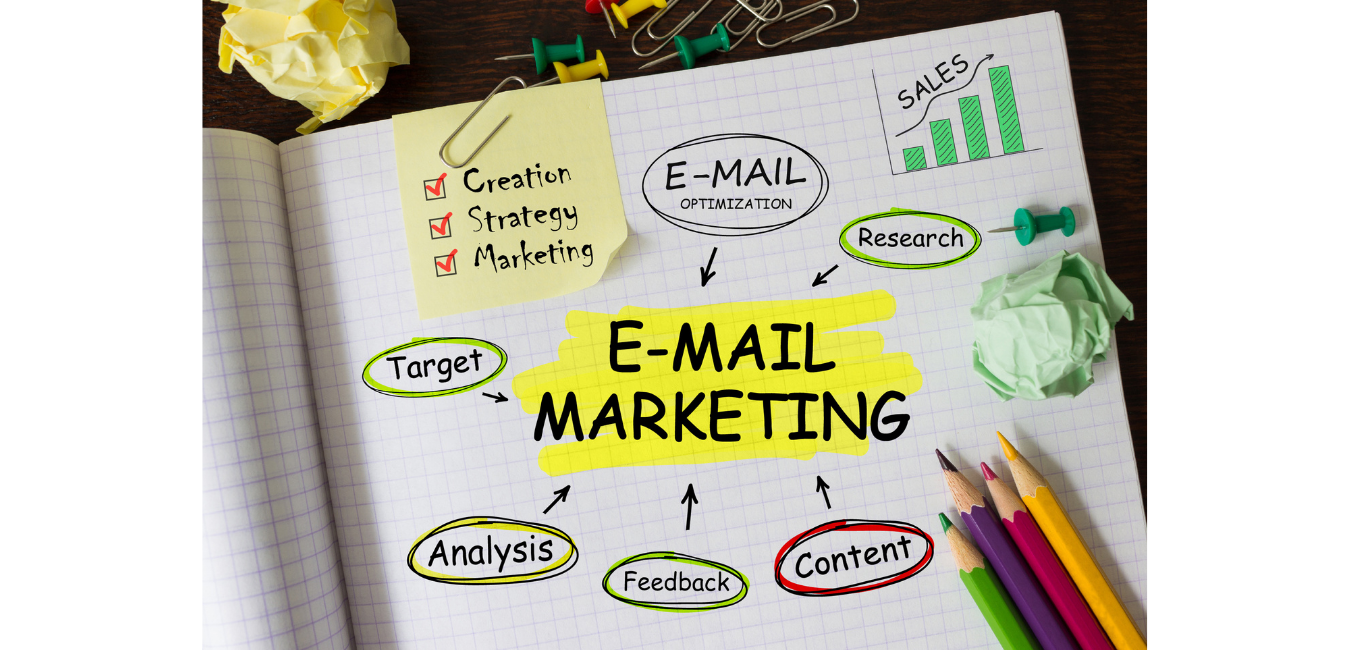Email marketing
Email marketing is the oldest form of online marketing. It is the most direct and effective way of connecting with your leads, nurturing them and turning them into customers. Most digital marketers use email marketing to advertise special deals, highlight content or promote an event.
Email marketing is one of the most popular and effective tools to help you boost sales online. In this article, we’ll share how email marketing can help your business grow and few tips to get you started.
What is email marketing?
Email marketing is a powerful digital marketing strategy used to promote products or services to prospects and customers. Effective email marketing can convert prospects into customers, and turn one-time buyers into loyal, raving fans. Using emails can also help your customers to become aware of your latest items or offers. Email marketing can play pivotal roles in lead generation, building relationships and also driving traffic to your blog, and social media.
How email started
Engineer Ray Tomlinson, the father of emails, in 1971 launched the world’s first email while in a windowless room in Cambridge, Massachusetts. The message was nothing special, a series of numbers and letters that looked more like a password than a message, but its significance was profound.
The email was sent from one computer to another, travelling through a network of machines not unlike the internet we know today. Tomlinson also introduced the “@” symbol in email addresses to the world.
In 1978, Gary Thuerk, a marketing manager for the now-defunct computer company Digital Equipment Corporation, sent out the first commercial and unsolicited mass e-mail promoting his firm’s computer products. Sent to hundreds of computers over ARPANET (a precursor to the Internet; see DARPA), Thuerk’s message immediately gave birth to email marketing. There were only a few hundred people on the list, but that was enough for Thuerk to claim the mantle, “Father of Spam.”
Today, we’re inundated with email marketing campaigns, and spams, but there’s no denying the impact a well-crafted message can have on your customers.
Why is email marketing important?

You now know what email marketing is. Let’s talk about why email marketing is relevant for your business.
Despite the rise of social media, and a hundred other forms of messaging, the traditional email format feels relatively old. However, it still remains one of the most powerful and effective way to nurture leads and boost customer loyalty. That’s why almost every social media platform requires you to have an email. The email list can yield dramatic rewards for business owners. According to Direct Marketing Association, email marketing on average sees a 4300 percent return on investment (ROI) for businesses in the US.
Importance of email marketing
1. Email is the #1 communication channel. You can go for a few days or weeks without checking social media like Facebook or Twitter, but most people use email every day, if not multiple times a day, so it’s safe to say that email marketing is good for business. At least 99% of consumers check their email daily. That can’t be said of any other communication channel.
2. You own your list. On any social media platform, your account (along with all your fans and posts) could be suspended or deleted at any time, for any reason, without notice. However, you own your email list. No one can take those leads away from you.
3. Email converts better. People who buy products marketed through email spend 138% more than those who do not receive email offers. In 2015, a study by the U.K.-based Direct Marketing Association (DMA) found that for every $1 spent, email has an average return on investment (ROI) of $38. That’s huge! The average order value of an email is at least three times higher than that of social media.
4. Email marketing allows you to run A/B tests. With email marketing, you can run A/B tests of a subject line or call to action to identify the best performing message using email marketing software that can also be configured to easily send out emails.
How to get started with email marketing?

Email marketing is made up of several moving pieces, but that doesn’t mean it has to be complicated. Here’s how it breaks down:
Step 1: Establish your goals
But signing up to an email marketing tool and jumping to send your first email, it’s worth taking a minute to think about your goals and what you really want to achieve with email, as that will dictate the type of campaigns you send, who you target, the content you include, and how you measure success.
Step 2: Build your email list
Now that you have identified your goals and what you want to achieve from email marketing, it’s time to build your email list so you can start sending campaigns that those goals. There are a couple of different ways you can build your email list, but the right method depends on the goals you establish in Step 1.
First, create a branded opt-in pop-up form for your website
Pop-up forms provide visitors with a quick, convenient way to share contact information and subscribe to your list while they’re browsing your site, making them a powerful tool for audience growth.
Create marketing campaigns to find your people with Facebook ads
Facebook ads can help you reach new audiences and find new customers by targeting people who’re similar to your existing contacts. But Facebook ads aren’t just used for selling stuff, but also to generate leads by collecting emails through ads that link to your landing pages with opt-in forms. In just a few steps, you can create an ad that drives people to your site so they can quickly and easily sign up for your email list.
Step 3: Select the type of campaigns you want to send
There are several different types of email campaigns you can send to subscribers, and the type you choose really depends on the goals you established in Step 1. The campaigns could be newsletters (about one main topic of interest), Marketing Offer (offering discounts and special promotions), announcement (announcing a new product, feature, or service), and event invitation.
Step 4: Create your first campaign
Now that you’ve decided on your goals, built a bit of an audience and selected the type of campaign you’re going to send, it’s time to start building your email. Find tips to making the most of your email marketing campaigns in the next heading.
Step 5: Measuring your success
After publishing your email campaign, it is now time to keep track of your progress and learn exactly how many new people join your email list. You can track the success of your email marketing campaigns: using tools like Google Analytics.
Email Marketing Strategies
Effective email marketing takes effort. Here are a few strategies for making the most of your email marketing campaigns:
Send relevant emails
Once someone has trusted you with their email address, don’t abuse that trust. Inundating your audience’s inbox with emails will cause them to lose interest or unsubscribe entirely. Focus on sending them relevant, engaging messages about the stuff they like, and they’ll be loyal for a long time to come.
Attract your subscribers
Grow your email list, you need to attract people with a compelling offer. You need a lead magnet, something awesome that you give away for free in exchange for an email address. It doesn’t have to cost you anything to create. Some popular lead magnet examples are: eBooks, resources or consultation.
Seek permission
Probably the most obvious problem is when your email gets sent to a subscriber’s spam folder. Before you can email anyone, you need their permission.
No purchased emails
While buying email lists may sound like a great shortcut, it isn’t. And we do not recommend it. We also do not recommend adding emails from people’s business cards that you collected at seminars or workshops unless you have their permission. People who don’t opt-in specifically for your email list are not interested in your services. Emailing them, therefore, is a complete waste of your resources.
Consistency
it’s important to email your subscribers consistently, so your list doesn’t go stale. So to keep your list fresh and filled with engaged subscribers, it’s a good idea to periodically remove inactive subscribers. An inactive subscriber could be anyone who has not engaged with any email in the past 6 months or more.
Timing
Timing can have a huge effect on subscribers opening your emails, so think carefully about what time and day you send your emails.
Make subject lines stand out
When it comes to email open and click rates, your subject lines are everything. Your job is to make your subject lines stand out. The subject line should entice curiosity, include numbers, be friendly and speak in a language and style that your subscribers use themselves.
Be friendly
When you draft your subject line and message content, write as though you are speaking to a person, with a personal subject line and a personalized message.
Mobile friendly
Mobile email accounts for 67% of all email opens, depending on your target audience, product, and email type. Make sure your email is responsive and includes easily loadable media. Also consider the fact that mobile screens are smaller, so long subject lines may get cut off on mobile devices.
Content must be engaging
If a subscriber is happy with your content, they are more likely to open your emails in the future. Conversely, if a subscriber is displeased with what they get, they probably aren’t going to open your emails again, and they may even unsubscribe. Simply make your content engaging and appealing t your subscribers.
Conclusion
Email marketing is a powerful driver of sales & revenue for your business, and has a greater reach and return on investment than any other channel available to marketers today.
Follow the steps outlined in this guide for a quick start to email marketing and campaign success.
Get started with email marketing today with SEO Digital!




